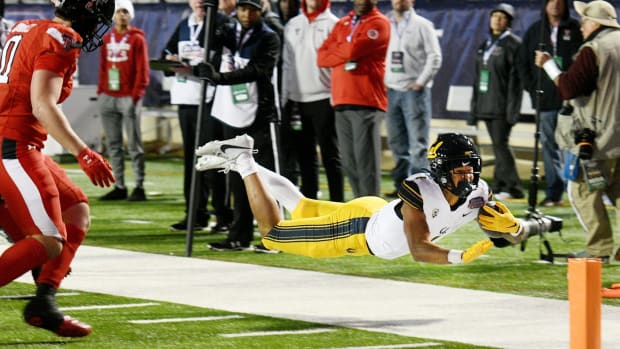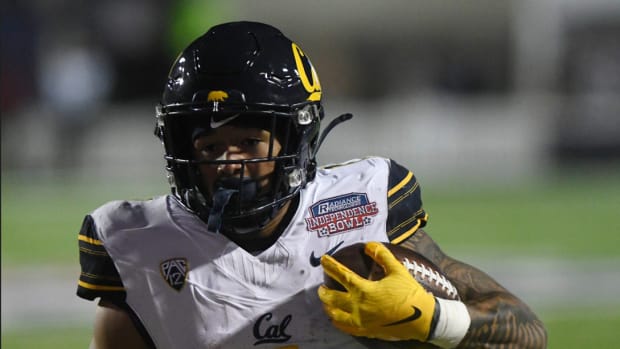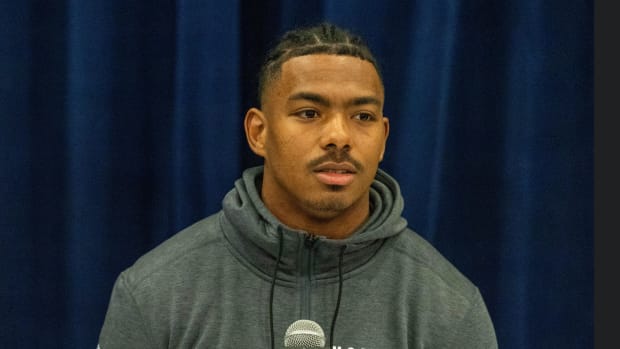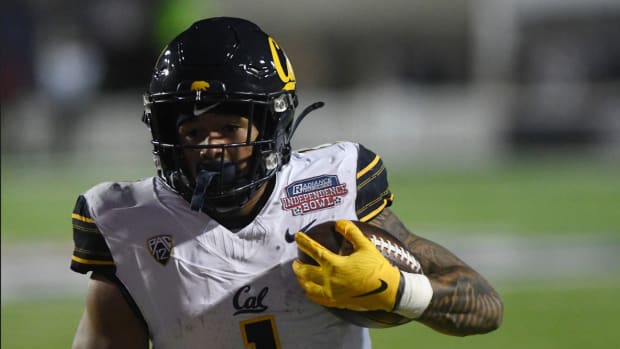What Would a Spring Football Season Look Like?
There is no guarantee the Pac-12 will play football in the spring, but let’s skip the debate about whether the Pac-12 should or will play spring football and assume the conference proceeds with a spring football plan, with competition beginning no sooner than Jan. 1.
What would a spring football season look like for Cal?
A few things must be considered before we start crafting schedules.
--Some players will opt-out of a spring season to protect their pro interests. Many already have.
Will Cal players with NFL aspirations -- and there are several -- want to play in a season that might jeopardize their ability to get drafted by the NFL? The 2021 draft is scheduled for April 29 through March 1, and the NFL agreement with the players allows the NFL to delay its draft until June 3. There’s no guarantee the NFL would want to do that, though.
Participation in spring football also would risk injury and make it difficult for those players to be involved in the NFL Combine.
--Some Pac-12 players might transfer to schools that are playing a fall schedule. It remains to be seen whether the SEC, ACC and Big 12 will play in the fall, but they might, and the NCAA might give transferring players a waiver to play immediately.
--Playing in the spring would mean two college football seasons (2020 and 2021) would be played in the same calendar year. That’s a lot of abuse to the body. It may require a shorter season this spring as well as a shorter season and a later start for the 2021 fall season.
--The overlap with winter and spring sports – especially basketball – would be a financial and logistical burden for schools, but they could figure it out.
--A number of incoming freshmen will be enrolling in January, making them eligible for spring football. Their participation in spring football games should be allowed but limited, perhaps to four games. None of the incoming freshmen from California high schools will have played fall football so their bodies will be equipped to handle spring ball.
--This would not be the first time Cal has played football in the spring. In fact, in the Golden Bears’ first seven seasons of football (1886-1892) were staged between January and April. But it has been awhile.
OK, let’s forge ahead, assuming that there has been sufficient progress made in testing and limiting the spread of COVID-19 to make playing in spring safe by Jan. 1. (A vaccine would solve a lot of problems, but we’re not counting on that).
So here is how it could work.
--A five-week training camp would begin in late December, say Dec. 28, if it is safe.
--An eight-game conference-only schedule would begin Saturday, Jan. 30. The NFL has playoff games Saturday, Jan. 9, and Saturday, Jan. 16, and there’s no need to compete with that. The NFL has no games the weekend of Jan. 30-31.
A nine- or 10-game schedule could be considered, but the fall 2021 college football season must be taken into account at each step. So let’s start the spring season as soon as possible and limit the number of games. The fall 2021 season should also be limited to eight or nine conference-only games, and that season should start in October, with preseason camp beginning in mid-September instead of early August. The limited number of games and the gap between the seasons should allow enough recovery time.
--Games would be played each Saturday or Sunday (no NFL games to interfere after Feb. 7), with the final regular-season game played Saturday, March 20, or Sunday, March 21, or Monday, March 22.
--The Pac-12 would create the eight-game schedule from scratch, having each team play five games against division opponents and three games against teams for the other division. Each team would play four home games.
--An open date could be placed on the weekend of March 27-28 to play makeup games if needed.
--A conference championship game could be played Friday, April 2, or Saturday, April 3, at the home site of the division champ with the better record.
--Bowl games could be played a week later, the week of April 10-18.
--A national championship playoff could be held if enough conferences play spring ball to make a playoff practical. The semifinal games could be played Saturday, April 17, and the title game would be Monday, April 26.
It seems unlikely bowl games or a national championship playoff would be available for teams playing a spring schedule, but nothing should be dismissed at this point.
And we’re done, possibly by April 2 and no later than April 26, several days before the NFL draft.
--Games would be played without spectators unless there is more progress made than expected in the spread of the virus.
Let’s take a look at a possible Cal winter-spring schedule:
Saturday, Jan. 30 – Cal at Oregon State, 1 p.m.
Saturday, Feb. 6 – Cal at USC, 7:30 p.m.
Sunday, Feb. 14 -- Washington at Cal, 3:30 p.m.
Saturday, Feb. 20 – Cal at Washington State, 1 p.m.
Saturday, Feb. 27 – Oregon at Cal, 3:30 p.m.
Saturday, March 6 – Cal at Arizona State, 7 p.m.
Sunday, March 14 – UCLA at Cal, 1 p.m.
Monday, March 21 – Stanford at Cal, 7 p.m. (to avoid possible conflict with weekend NCAA basketball tournament games that may be played Saturday and Sunday)
Friday, April 2 – Pac-12 title game, Cal at USC, 6 p.m.
Saturday, April 17 – National semifinals at the Rose Bowl, Cal vs. Ohio State
Monday, April 26 – National championship game, Cal vs. Alabama, Hard Rock Stadium, Miami Gardens, Fla.
No doubt additional problems and barriers will crop up for what promises to be a logistical headache if the Pac-12 does proceed with a spring football season.
College football 2020 fits into the “wicked problem” concept, which identifies an issue that has no right answers, according to ESPN.com’s Bill Connelly.
And who came up with the concept of a “wicked problem”?
You guessed it, a Cal professor, Horst Rittel.
Follow Jake Curtis of Cal Sports Report on Twitter: @jakecurtis53
Find Cal Sports Report on Facebook by searching: @si.calsportsreport
Click the "follow" button in the top right corner to join the conversation on Cal Sports Report on SI. Access and comment on featured stories and start your own conversations and post external links on our community page.





